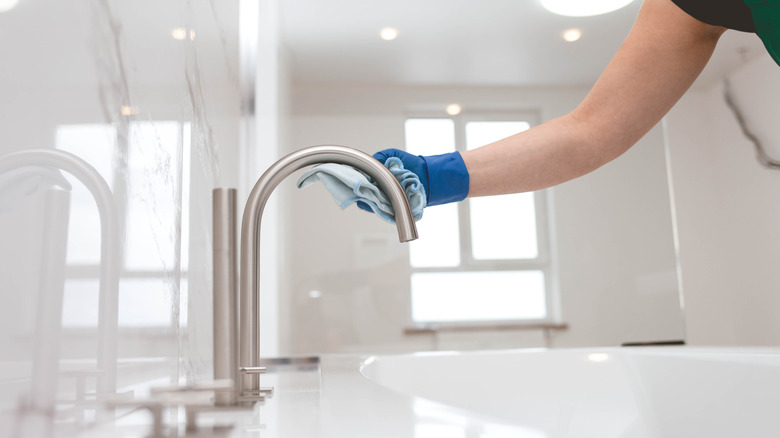Why You Should Think Twice Before Using Rub 'N Buff On Certain Fixtures
If you spend a lot of time in the DIY sections of social media, you may have noticed that Rub 'n Buff is being used on everything from vintage lamps to home fixtures. The issue with this trend is that it's often promoted as an easy metallic coating, even though it comes with a steep learning curve. Before you use Rub 'n Buff, know that it's not suitable for high-touch surfaces — one of its biggest limitations. The popular metallic wax is not waterproof, and it doesn't stand up to constant touching. That's why it's not a good choice for faucets, cabinet pulls, or doorknobs.
Rub 'n Buff is a great product if you want to make your vintage lantern look more antique. It can also be a creative way to repurpose a thrifted frame to look really high-end. However, it shouldn't be used on surfaces exposed to frequent touching, water, or outdoor elements. Unlike spray paint, Rub 'n Buff is a hardening wax – it is not meant as a means to permanently change the look of fixtures. If you love the look of this beautiful coating and are set on using it to update fixtures, you can take the extra step of clear coating it to protect it. This simple extra step helps your upgrade stay beautiful and budget-friendly.
How to make Rub 'n Buff last on high-touch fixtures
If you want to get ahead of the new trend and give your kitchen an upgrade by refinishing your cabinet hardware, using Rub 'n Buff is a great option, but only if you use a clear coat to lock in that shine. Without it, you will be disappointed that your pulls look patchy after just a couple of weeks of use. Also, we can't recommend using Rub 'n Buff on faucets, since even with a clear coat, over time it can flake off and be ingested. Though this method adds a step, it takes about the same time as spray painting. The extra step is worth it if you love the look of the wax metallic coating. After all, most home upgrades are worth the extra time.
Start by prepping the metal, applying Rub 'n Buff as usual, then buffing and allowing it to dry for 24 hours. You will then take your hardware to a well-ventilated area and spray it in light coats with a non-yellowing acrylic clear coat spray. Choose your preferred finish — high gloss, satin, or matte — based on your design style. Make sure to allow it time to dry between coats. This method keeps high-touch hardware looking fresh and polished much longer. Once dry, re-attach your hardware and enjoy the results — but remember, not every social media hack is worth following.

